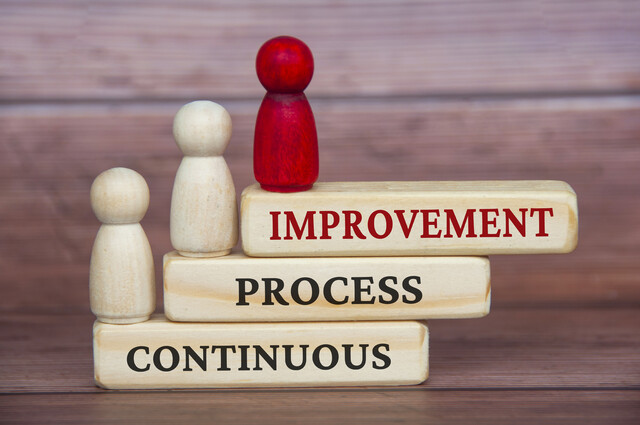The things that are purchased in procurement will not always be immediately used or sent to the departments that requested them. At times, the procurement team will be responsible for monitoring and maintaining the inventory that they procure for the business. The task of inventory management is one of the facets of procurement management that brings the entire process in the supply chain full circle. There's more logistics and work that is required when inventory management is included, but it can afford the procurement team more control over their actions.
This article will discuss inventory management and what it can offer to procurement management. Topics will include how you can build a stable inventory, actions to maintain it, and organizational tactics. Also discussed will be strategies that you can use to improve any of those aspects and truly excel in your management practices.
What is Inventory Management?
A simple definition of inventory management state that it is a collection of processes and practices that intersect with procurement or supply chain management. An extended explanation is that it's a means of optimizing the inventory of a business or procurement team to facilitate uninterrupted sales, procurement, production, and service without compromising cost. There are four primary components that are applied to inventory management. The first one is supply chain or procurement management, which is what has been discussed throughout . The other three include:
-
Inventory Control--The bulk of inventory management involves inventory control. It involves all of the coordinating and supervision of the inventory. All of the items in the inventory need to be maintained until it is time for their usage, so it also includes the storage and record keeping of the stock. So if a product requires being kept at a certain temperature in order to maintain its quality, any actions to ensure that that happens would be a part of inventory control in the management process. It may also include purging old inventory, such as items that are damaged or simply no longer needed. All actions in inventory control, however, need to be accounted for just like the inventory itself.
-
Demand Forecasting--Demand forecasting basically is estimating the state of the market as it relates to inventory and procurement based on current information. This is something that procurement teams already use as a resource for negotiating, as supply-and-demand can dictate prices for anything in the economy. A higher demand often means that prices are lower (usually) and businesses will often wait until that happens before purchasing frequently used items. Inventory management identifies exactly what those items are and the frequency in which they are used--therefore how often supplies need to be replenish. When used correctly, demand forecasting can help prevent such supplies from running out by setting up a purchasing cycle that coincides with those points of high demand.
-
Reverse Logistics--The final component is reverse logistics, which is the flow of unwanted goods or surplus items back into the supply chain for reuse elsewhere. You usually can't return parts of an order back to the supplier and most businesses do not have much use for excess inventory, unless it's a regularly used item. Rather than eating the cost of the excess inventory or wasting it, the procurement team can resell it back to other businesses and services that typically have use for reverse logistics inventory. This could be recycling centers, resale or refurbish businesses, and fulfillment services. It could also include other departments in the business, depending on what those items are.
Building A Stable Inventory
To build a stable inventory that inventory management can be applied to requires having an understanding of how the products being procured are used. If an item is only rarely used and/or has a short shelf life, it makes no sense to try and build up a supply of it. Likewise, an item that is constantly used but at rates that are almost too fast to keep up with won't be something that you can regularly carry in your inventory. Just because it is something that is used doesn't mean that it's something that is practical to keep around for a while in mass quantities. The things that should be used to build a stable basis for your inventory should be 1) regularly used, 2) shelf stable, and 3) budget-friendly even in large amounts. Even if there's a little bit of surplus in between orders, it's not enough to be considered wasteful.
Inventory management requires that whatever inventory you have be monitored. You can't do much of anything regarding your inventory if you have no clear idea of what you have. Taking the time to closely monitor your inventory can help make it possible to manage it and ensure the continued quality of the items. Active monitoring can be extensive and even a bit overwhelming, depending on the size of your inventory. However, there are a few things that can make the process easier.
-
Simplify Things--An intricate, complicated system is likely to be more of a hassle than it's worth. Simple systems that keep a running total of what's in stock and where it's located are sometimes all you need. Most inventory monitoring systems are digitally automated, so all you need to do is scan a barcode or hit a few buttons and the computer does most of the work. Installation of and product entering in such a system is often the hardest part.
-
Get The Experts Involved--Sometimes, you need to get someone who knows what they're doing. Just like how any business will hire managers for their staff, you can hire managers for your inventory. These are usually people whose job is to actively monitor and maintain stock items. They already know how to operate software associated with inventory management, organize products, and interpret information used in demand forecasting. Even if additional staff are not hired just for managing the inventory, current staff who are given the task of handling inventory should still receive the appropriate training
-
Use The Right Tools--Digital monitoring systems are just one of the tools that can be used to monitor inventory, although many of them will be based on digital technology. Most of the software used in monitoring and management are integrated with other programs and systems used in procurement, like Point of Sale and automatic ordering. Making sure that you are using the right tools can largely make things easier and help prevent any problems from arising.
Organization And Storage
Maintaining inventory also involves tactics regarding organization and storage. These actions ensure that the other parts of inventory management discussed here will actually work as they are intended. It is rather difficult to manage something when it's all in one great big mess. Addressing organization and storage largely requires doing two things.
-
Categorization--Dividing the items in your inventory by category makes it easier to track and located them in the overall inventory. It groups things based on similarities or identifying features, like material type or usage. There can even be further categorization within those groups to allow for tighter organization. For large diverse inventories, categorization is a valuable tool that keeps everything straight. However, that does not meant that smaller inventories can't benefit from categorization; it all depends on what is in the inventory.
-
Record Keeping--Just as documentation serves a purpose in other areas of procurement, so does it in inventory management. Organize record keeping, in any form, allows procurement agents to calculate their stock levels and effectively monitor information. This can be done with an automated system, like the example discussed earlier, or manual one where data is entered in by hand. Records should include information regarding what the product is, when it was acquired or used, and its quantity. They should also be evaluated regularly to ensure that the data accurately represents what is in the inventory.
Strategies
In addition to doing any of the actions discussed throughout this article, there are strategies that can be used to improve your inventory management practices in general. They can be applied where needed and will likely work in tandem with any existing procurement strategies that are already in operation. The ones listed here are only a sample of the options available, so it may be possible that one that is right for your circumstances may not be listed here. If needed, feel free to search elsewhere for additional options.
A few of the more commonly used inventory management strategies include:
-
Conventional Manufacturing Strategy--Conventional manufacturing strategy is the tried and true method that has been used with assembly lines and factories for decades. It primarily involves the usage of inventory, with each area working with its own specific inventory and their own segment of the work. Nothing is left to idle--meaning production is continuous--and inventory levels are mostly synchronized throughout the line. The strategy does have a major flaw, as any hiccups in the production line can potentially through the entire system off. Bottlenecks and low inventory levels can quickly bring the entire system to a screeching halt, causing significant delays for the business.
-
Warehouse Management Systems (WMS)--As the name suggests, WMS is best used with warehouse inventories. These are digital systems that automate the entire inventory process, and simply need staff to complete tasks and enter data. A WMS can be incredibly beneficial for those with large inventories, as they help to reduce inaccuracies that are common with high product quantities. This can in turn reduce waste, operation costs, and extend the procurement cycle rate. There are multiple companies that create WMS software, so there's quite a few options on the market for businesses and procurement teams to choose from.
-
Just-in-Time (JIT) Method--The JIT method takes conventional practices and tweaks them a bit to create a better consistency. Rather than keep inventory levels up to meet the demands of production, they are kept up to meet customer demands. Production rates don't always match up with customer demand, which is how instances of surplus develop with the final product a business produces. The JIT method balances things out a bit, reducing product waste, storage and maintenance costs, and profit lost due to out of sync levels. Using this method requires paying very close attention to the inventory levels of production materials, the market for the product, and resource availability from suppliers. The entire line can then stall due to inaccurate information and the inability to keep up with demand.
-
Economic Order Quantity (EOQ)--Another method that takes into account customer demand, EOQ tries to make that demand constant and synchronizes inventory depletion to it. As the demand drops, so does the inventory; they both reach zero at the same time, leaving no excess or unhappy customers in the process. Just as with the JIT method, EOQ requires careful monitoring of factors to ensure that levels are accurate for the sake of the strategy's success. There's a lot of pressure put on the timing of things so problems like delays or mistakes can be especially detrimental.
-
Material Requirements Planning (MRP) Method--MRP heavily relies on the usage of software and applications to accurately manage inventory levels. There's an intensely detail and constant analysis of information related to the inventory and procurement that generates plans designed to perpetuate production. For example, determining when to order new inventory of a product so that the supply never dips below the minimum amount required to keep things operational. The software and maintenance, not to mention the installation, of MRP software can be very expensive. The value that they have over time in accurately allocating procurement, inventory, and production timing can justify the cost should it ultimately be a viable option.
-
Push or Pull Models--Push and Pull models address inventory based on two different approaches to demand. A pull model is dependent on customer demands and is largely another name for the JIT method of inventory management. The push version excludes the current demands of the customer for products and instead uses past data to predict what it will be in the near future. It's highly dependent on successful demand forecasting and the accuracy of records and data. There's also a significant amount of risk attached to the push model, as miscalculations can lead to expensive write-offs and waste. Some use a hybrid version of the push and pull models to create a system that combines the best features of both into a highly sophisticated system. In those instances it's referred to as a lean inventory strategy and it allows for adjustment of forecasted data to provide more accuracy.
























